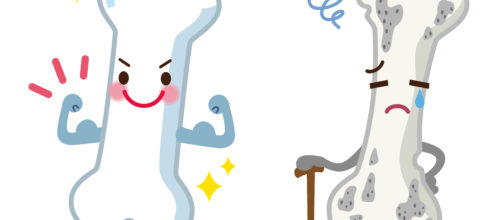
Decrease Your Risk of Osteoporosis
Although genetic factors such as sex, age, and family history play a significant role in determining whether an individual is at heightened risk of osteoporosis, there are many things you can do to improve your bone health. Lifestyle factors such as diet and physical activity influence bone development in youth and the rate of bone loss later in life. It is never too early or too late to start improving your bone health.
Factors to Promote Bone Health:
1. Diet
As we discussed earlier this month, adopting a healthy diet that is rich in calcium and vitamin D can help maintain and improve bone health.
2. Lifestyle
Avoid unhealthy habits, such as smoking or drinking excess amounts of alcohol which can contribute to loss of bone density.
3. Medications
Certain medications such as corticosteroids, especially when used long term, can also contribute to bone loss. If you are at risk for osteoporosis you should discuss with your doctor about whether any of your medications may be affecting your bone health.
4. Exercise
Exercise can help strengthen your bones and prevent bone loss by stimulating bone cells to produce proteins that increase bone strength. There are two types of exercises that are important for building and maintaining bone density: weight-bearing and muscle strengthening exercises.
Weight-Bearing Exercises
These exercises include activities in which you move against gravity while staying upright. Weight-bearing exercises can be high-impact or low-impact. Low-impact weight-bearing exercises are a safe alternative if you have already been diagnosed with osteoporosis or are not able perform high-impact exercise due to fall risk, fracture, or pain. Check with your healthcare provider before starting any new exercise routine.
Examples of high-impact weight-bearing exercises include:
- Dancing
- Hiking
- Jogging/running
- Jumping Rope
- Stair climbing
- Tennis
Examples of low-impact weight-bearing exercises include:
- Elliptical
- Walking on a treadmill or outside
- Yoga
- Tai Chi
Muscle-Strengthening Exercises
These exercises include activities where you move your body, a weight or some other resistance against gravity.
Examples of resistance exercises include:
- Lifting weights/using weight machines
- Using resistance bands
- Body weight exercises/functional movements
- For example: standing up from a chair, squatting, rising up on your toes, etc.
For people with osteoporosis or an increased risk for fracture, preventing falls is a top concern. It is also important to avoid unintentional injuries, especially those of the spine, which may occur with everyday activities or exercise such as bending, lifting, and twisting.
Contact your physician or physical therapist to learn which exercise routine is best for you if you have or are at risk for osteoporosis.
References:
https://www.iofbonehealth.org/preventing-osteoporosis
https://www.nof.org/preventing-fractures/prevention/
https://www.health.harvard.edu/womens-health/can-i-do-anything-to-prevent-osteoporosis
